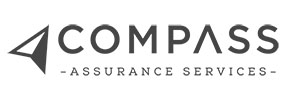The maintenance of water assets such as tanks, reservoirs, lined ponds and tailings dams can be a challenging task for many facilities. Maintenance usually involves the periodic cleaning and inspection of the asset to maintain storage capacity, check asset integrity, remove sludge, and comply with statutory obligations. The critical nature of these assets often means that taking them offline for maintenance is challenging and can be very costly.
At face value, the solution of using robots to clean and inspect these assets sounds both simplistic and common-sense, however most assets present challenges that must be carefully considered to avoid asset damage, downtime, turbidity impacts or other undesired outcomes. Using substandard equipment or inappropriate techniques to undertake these tasks can have significant unwanted impacts and be a costly decision.
Before undertaking any maintenance task, it is important to understand the driver for the work being performed, the operational constraints that the asset has and the expectations of the Client for the work being undertaken. Risks associated with the work should be thoroughly understood by both parties and any required mitigation strategies agreed upon in advance. An experienced service provider will generally have a sound understanding of these risks and a suite of mitigations incorporated into their Standard Operating Procedures.








